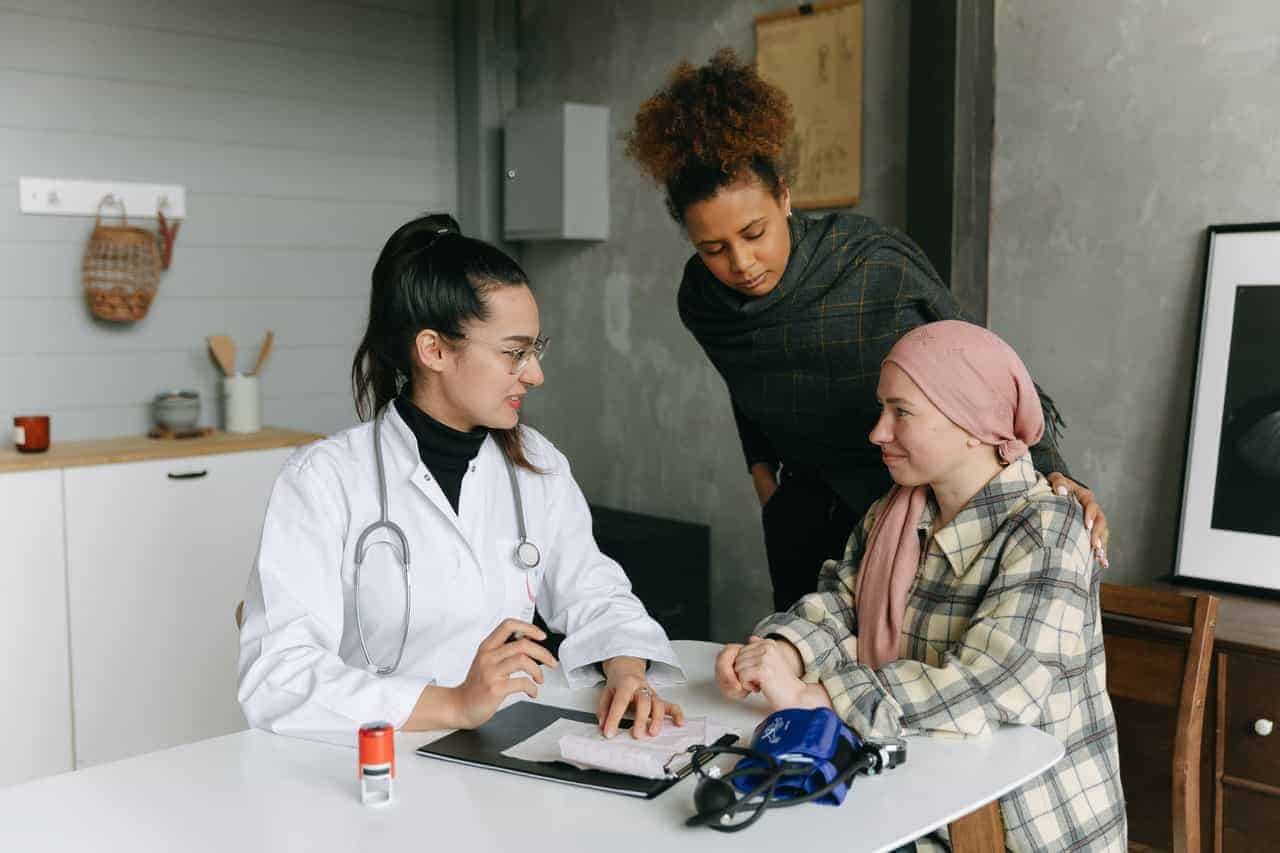Diabetes is a serious condition that affects millions of people around the world. There are two main types of diabetes, type 1 and type 2, that have distinct differences. Understanding these differences can help people to better manage their diabetes and keep it under control. This article will discuss the differences between type 1 and type 2 diabetes, so readers can be informed about the condition.
The first difference between type 1 and type 2 diabetes is how they are caused. Type 1 diabetes is an autoimmune disorder in which the body’s immune system attacks the cells in the pancreas responsible for producing insulin. Type 2 diabetes, on the other hand, is caused by genetics or lifestyle factors such as poor diet or lack of exercise.
Another difference between the two types of diabetes is how they are treated. Treatment for type 1 diabetes usually involves daily insulin injections to help regulate blood sugar levels. In contrast, treatment for type 2 usually involves lifestyle modifications such as improved diet and increased physical activity. Some people with type 2 may also require medications or insulin injections, depending on their situation.
By understanding the differences between type 1 and type 2 diabetes, readers can better understand this serious condition and learn how to properly manage it if they have it or know someone who does. The next section will provide more information about these two types of diabetes, so readers can be informed about this important topic.
Causes Of Type 1 And Type 2 Diabetes:
 Type 1 and type 2 diabetes are two chronic conditions affecting how the body manages blood sugar levels. Type 1 diabetes is caused when the body does not produce enough insulin, while type 2 diabetes develops when the body does not use insulin effectively.
Type 1 and type 2 diabetes are two chronic conditions affecting how the body manages blood sugar levels. Type 1 diabetes is caused when the body does not produce enough insulin, while type 2 diabetes develops when the body does not use insulin effectively.
A better understanding of the causes of these two types of diabetes can help people make better choices about their health. Type 1 diabetes is usually diagnosed in children and young adults and is an autoimmune disorder where the body’s immune system attacks and destroys cells in the pancreas that produce insulin. Type 2 diabetes occurs when the body becomes resistant to insulin or does not make enough insulin. It usually happens over time due to lifestyle factors such as being overweight or inactive.
By making simple changes to diet and exercise, people can combat type 1 and type 2 diabetes by controlling their blood sugar levels. Eating foods rich in fiber and low in fat, as well as regular physical activity, can help reduce risk factors for both types of diabetes. Taking medications prescribed by a doctor may also be necessary for controlling blood sugar levels in some cases. Educating yourself about your risk factors for each type of diabetes is one step towards taking control of your health.
Symptoms Of Type 1 And Type 2 Diabetes:
People with diabetes have different symptoms, depending on the type of diabetes they have. Type 1 and type 2 diabetes are different, each with its symptoms.
Type 1 diabetes is an autoimmune disease that causes the body to produce little or no insulin. Symptoms include excessive thirst, frequent urination, extreme hunger, weight loss, fatigue, blurred vision, and irritability.
Type 2 diabetes occurs when the body fails to produce enough insulin or the cells don’t use insulin properly. Signs of type 2 diabetes include increased thirst, frequent urination, fatigue, blurred vision, and weight gain. Other symptoms may include slow-healing sores or cuts and itchy skin.
Both types of diabetes can cause long-term complications if left untreated, such as heart disease, stroke, and kidney damage. It’s important to recognize these symptoms, so you can seek medical help and take steps to prevent further health problems from developing over time.
Diagnosis Of Type 1 And Type 2 Diabetes:
Doctors diagnose type 1 and type 2 diabetes differently. Type 1 diabetes is an autoimmune disorder, so a doctor will look for antibodies in the blood that indicate a problem with the immune system. They may also order a glucose tolerance test to measure how quickly the body processes sugar. Type 2 diabetes is typically diagnosed after a person has been showing signs of high blood sugar for some time. A doctor will run tests to see if the body produces enough insulin and how well it responds to insulin.
There are steps that people can take to help prevent or delay the diagnosis of both types of diabetes. Eating healthy foods, exercising regularly, and maintaining a healthy weight can all help reduce the risk of getting either type 1 or type 2 diabetes. Additionally, people should talk to their doctor if they have any questions or concerns about their health to get tested early. Taking these steps can make all the difference in preventing or slowing down the development of diabetes and its associated symptoms.
Treatment Of Type 1 And Type 2 Diabetes:
Diabetes is a serious health condition that can impact many aspects of life. Diabetes treatment depends on the type, and it’s important to understand the differences between type 1 and type 2 diabetes. Type 1 diabetes occurs when the body’s immune system attacks and destroys insulin-producing cells in the pancreas.
It is usually diagnosed in children and young adults and must be managed with daily insulin injections or an insulin pump. People with type 1 diabetes also need to monitor their blood sugar levels throughout the day and adjust their diet and activities accordingly. A combination of lifestyle factors such as poor diet, lack of exercise, obesity, and genetics causes type 2 diabetes.
It is more common among adults, but can also affect children. Treatment typically involves lifestyle changes such as eating a healthy diet, exercising regularly, and maintaining a healthy weight; medications may also help control blood sugar levels.
Both types of diabetes require close monitoring, regular check-ups with a doctor, and lifestyle changes to effectively manage symptoms and prevent complications. Awareness of the different treatments for each type of diabetes can help people make informed decisions about their health care.
Complications Of Type 1 And Type 2 Diabetes:
Diabetes is a serious condition that can lead to many complications. Type 1 and type 2 diabetes have similarities, but important differences. This article will examine potential complications from type 1 and type 2 diabetes.
People with diabetes are at higher risk of health problems like heart disease, stroke, kidney failure, and nerve damage. In addition, people with type 1 diabetes have an increased risk of developing diabetic ketoacidosis (DKA). That occurs when the body does not produce enough insulin to process glucose. People with type 2 diabetes may be at greater risk for retinopathy—blurred vision because of changes in the blood vessels in the eyes—as well as high blood pressure, high cholesterol, and obesity.
These complications can be prevented or minimized by controlling blood sugar levels through lifestyle changes such as eating a balanced diet and exercising regularly. Additionally, people living with diabetes should get regular check-ups, so their doctor can monitor their condition and offer advice on how to reduce any risks associated with their diabetes. Taking these steps can help people live healthy lives despite their diagnosis.
Conclusion:
Type 1 diabetes and type 2 diabetes are two types of the same chronic disease. Both can lead to serious health complications, including heart disease, stroke, kidney failure, and blindness. To understand the differences between the two types of diabetes, it’s important to understand their causes and symptoms.
Type 1 diabetes is an autoimmune disorder where the body’s immune system mistakenly attacks pancreas cells producing insulin. Symptoms include increased thirst, frequent urination, weight loss, fatigue, and blurred vision. Diagnosis is usually made with a blood test measuring glucose levels in the bloodstream. Treatment includes daily insulin injections and lifestyle changes such as diet and exercise.
Type 2 diabetes typically develops later in life due to lifestyle factors like being overweight or having high cholesterol. Symptoms include increased thirst, frequent urination, fatigue, blurry vision, and slow-healing sores or cuts on the skin. Diagnosis is made with a fasting plasma glucose test or an A1C test that measures average blood glucose over three months. Treatment may involve lifestyle modifications like eating healthy foods, being physically active, and taking medication prescribed by a doctor.
Both type 1 and type 2 diabetes can cause long-term complications if not managed properly. These can include an increased risk of heart disease, stroke, kidney damage, nerve damage, and eye damage that could lead to blindness. It’s important for those with diabetes to regularly monitor their blood sugar levels to help prevent these complications from happening.
We are young/teen girls and boys. We enjoy our life using travel blog and outings and watching people’s lifestyle blog. We try to share our knowledge and what we are looking. We discussed with various people from our and other countries about fashion blog and health blog related knowledge sharing. We get tips and just share them.
Some of us are pure technology blog love guys and girls who share some tips about internet and business blog related. Some of my friends share knowledge on baby care , home improvement, beauty tip blog, and general knowledge. You can easily read our blogs in your free time or on Sunday and get more information with enjoying knowledgeably sharing. That’s why we called Sundaybestblog.
Share This!!






